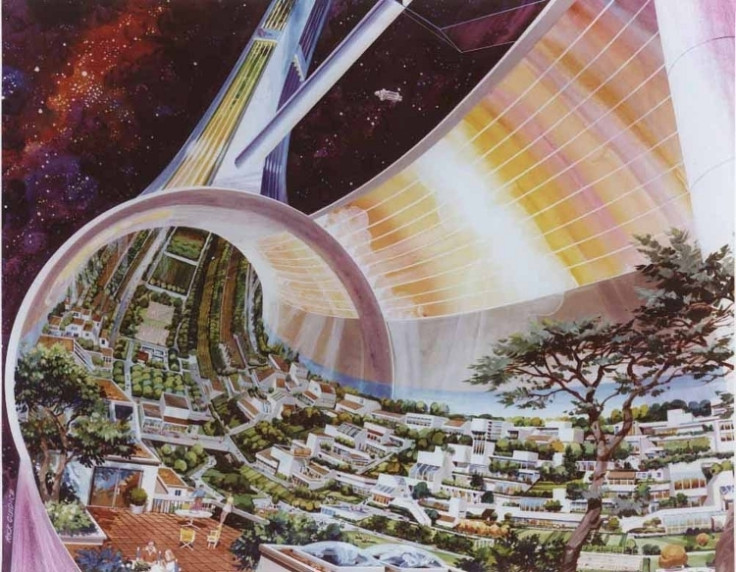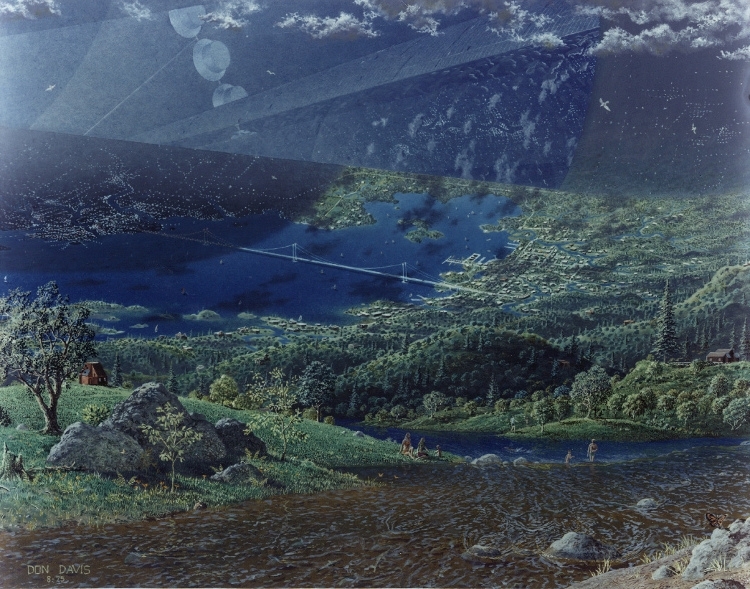Nasa's beautiful dreams for a self-sufficient space colony revealed
Up to 140,000 people could happily live in the imagined space station.

Nasa's vision of a futuristic space station has been unveiled in a series of beautiful drawings depicting an imaginary future structure on a vast scale.
The space station – which is more of a dream than a plan at the moment – is a giant ringed structure complete with lakes, parks and fields. The space station was called a 'Stanford torus', and could be home to 140,000 people.
The Stanford torus is a theoretical structure often invoked as a potential way to support many people comfortably in space. Interstellar fans may recognise the rough plan of Cooper Station, the enormous structure created to house humanity after Earth becomes uninhabitable, as a Stanford torus.
The ringed structure would rotate fast enough to mimic the force of gravity. Sadly, it wouldn't be a short-term project to create a Stanford torus. It would take an estimated 10 million tonnes of matter, which may have to come from a source such as the moon.
While they depict a ambitious of a space station that is very, very far from being realised in the future, the images also have a wonderfully retro feel. They were created as part of a project in the 1970s led by Gerard O'Neill, a physicist at Princeton University, with the help of the NASA Ames Research Center and Stanford University. They were recently published on the site Public Domain Review.
"Colonies housing about 10,000 people were designed and a number of artistic renderings of the concepts were made," the site wrote.









© Copyright IBTimes 2025. All rights reserved.





















